
Corneal disease is the most common reason for ophthalmic examination in the horse. Many corneal lesions are initially due to trauma.

Corneal disease is the most common reason for ophthalmic examination in the horse. Many corneal lesions are initially due to trauma.

Roseland, N.J. -- The Unwanted Horse Veterinary Relief Campaign is reminding veterinarians that applications for free fall vaccinations for qualifying equine facilities are due Aug. 1.

A study in 11 clinically normal adult horses evaluated whether triamcinolone acetonide, a commonly used corticosteroid for treating navicular syndrome, would diffuse from the distal interphalangeal joint into the navicular bursa.

Penn's New Bolton Center receives $37,276 in donations.

We've come a long way since Dolly the sheep. But how viable is this technology?

Various nutritional factors have been linked to the initiation and recurrence of the disease process.
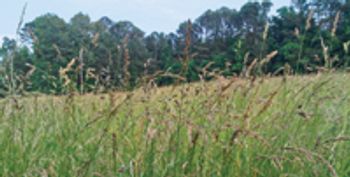
Objective forage analysis methods ensure better nutritive content for horses.
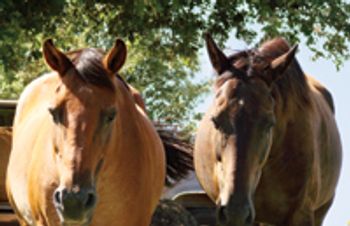
Join the Unwanted Horse Veterinary Relief Campaign.

Fort Collins, Colo. -- Cooler-than-normal spring temperatures are just one factor that could contribute to possible increased cases of West Nile virus this year.

Statistics from some procedures don't show a big difference between geriatric and mature horses.

Gainesville, Fla. -- A cloned foal -- the first created using oocytes from a live mare -- was born at the University of Florida College of Veterinary Medicine (UF) in March.
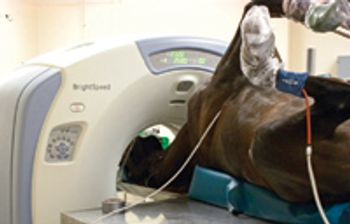
CT scanning has many uses in equine medicine and surgery.
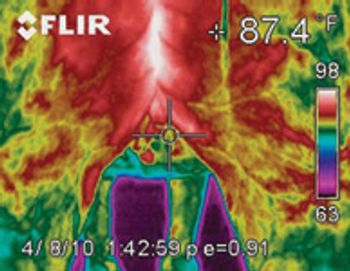
Both human and equine athletes are subject to leg muscle injuries.

Davis, Calif. -- The Center for Equine Health at the University of California-Davis (UC-Davis) received a $3 million gift from the William and Inez Mabie Family Foundation to support the center's research and teaching efforts.

Millsboro, Del. -- Intervet/Schering-Plough Animal Health issued an urgent recall of its PreveNile West Nile virus vaccine due to an increased incidence of adverse events.

Foaling, like human delivery, should be uneventful. But the process can be fast and violent, and it can present serious health problems to the mare and foal.

St. Louis, Mo. -- The Food and Drug Administration is reporting that Purina Mills has recalled specific lots of horse and poultry feed.

Oklahoma City, Okla. -- A bill allowing non-DVMs to float horses? teeth if they meet state certification requirements passed the Oklahoma Senate March 31.
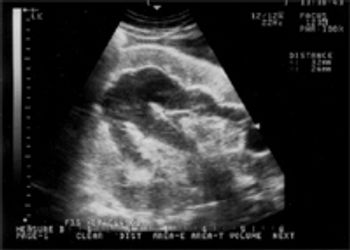
A 5-year-old Oldenburg gelding used for dressage, was presented for evaluation of mild bouts of recurrent colic, more frequent over the past month. The colic signs included flank watching and intermittent sternal recumbency and were either self-limiting or responsive to a single dose of Banamine.

Management of Equine Metabolic Syndrome (EMS), the most accepted term for a syndrome of middle-aged obesity accompanied insulin resistance (IR) and insidious-onset laminitis, can be challenging as it primarily involves client education and acceptance to comply with dietary recommendations to effect weight loss.

Management of pituitary pars intermedia dysfunction (PPID) in equids consists of improved husbandry, including adequate nutrition and limiting competition for feed, body-clipping, dentistry, and appropriate treatment of concurrent medical problems. In addition, specific treatment with the dopamine agonist pergolide can improve quality of life and reverse many clinical signs of the disease in PPID-affected equids.
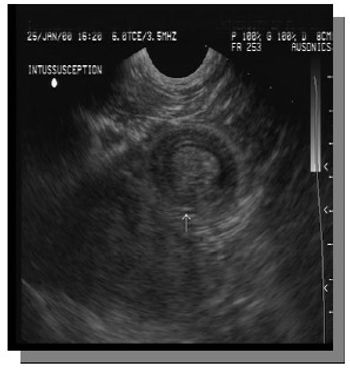
Abdominal pain in the foal can be a frustrating diagnostic challenge as the differential diagnosis are extensive. Abdominal pain can progress rapidly leading to septicemia or even death.

Although acute renal failure (ARF) remains a relatively uncommon problem in horses, it is a serious disorder that if not properly recognized and treated often has a poor outcome. Acute renal failure in the horse can develop as a complication of another disease process that causes hypovolemia (colic, colitis, hemorrhage, or exhaustion).

Perinatal Asphyxia Syndrome produces hypoxic ischemic encephalopathy (HIE) resulting in neurological deficits ranging from hypotonia to grand mal seizures. Foal's affected with perinatal asphyxia also experience gastrointestinal disturbances ranging from mild ileus and delayed gastric emptying to severe, bloody diarrhea and necrotizing enterocolitis (NEC).

Hematuria can be a presenting complaint for a variety of disorders of the urinary tract. The problems causing hematuria can range from relatively minor disorders to more severe disease processes that may result in life-threatening hemorrhage.